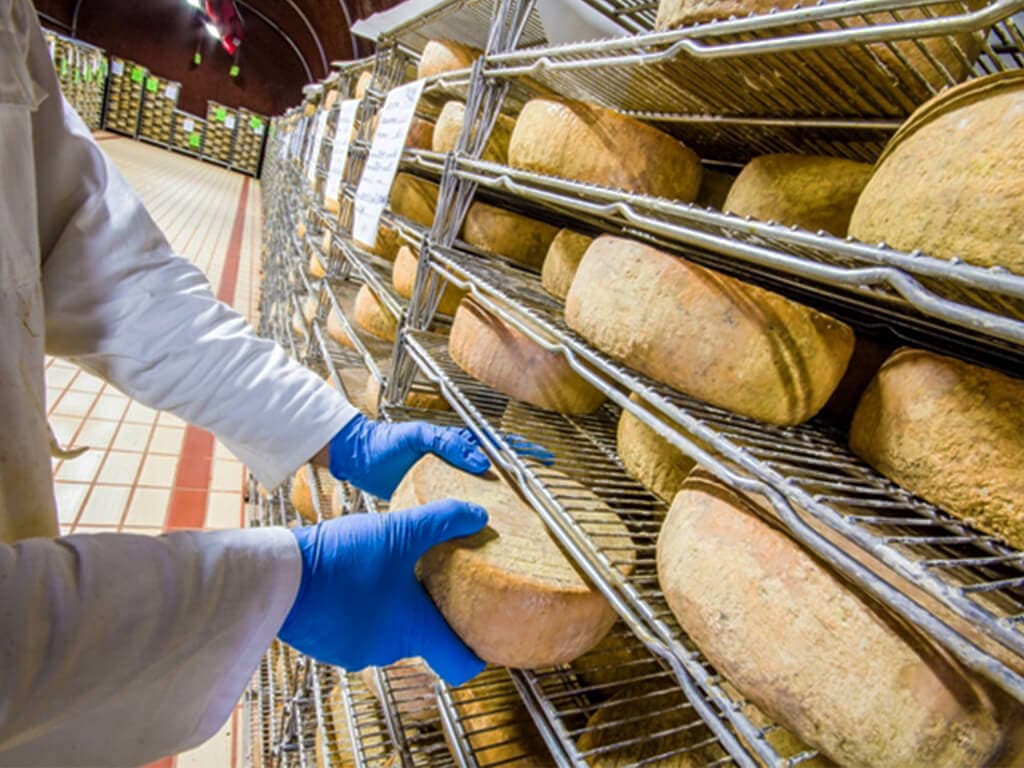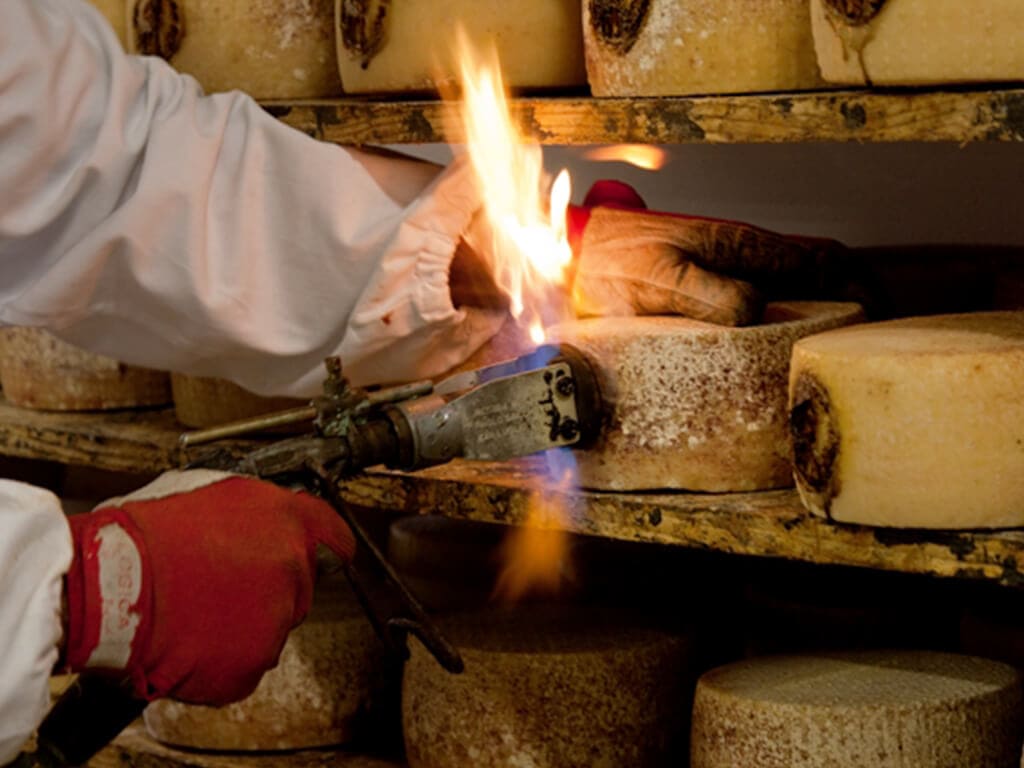When you think about food and Tuscany, I guess your mind immediately goes to a lovely dish of cold cuts, bruschette and cheese accompanied by a glass of red wine. Well, the Pecorino Toscano cheese is one of the excellence of our beautiful land of Tuscany, known all over the world for its smoothness and unique taste.
A bit of history of the Pecorino Toscano cheese
The origin of the “cacio”, dates back to the ancient Romans. But probably even before with the Etruscans. The first Pecorino Toscano cheese wheels appeared in Rome, came from the roman colony of Luni, located in the current Lunigiana, a land of border between the northern Tuscany and Liguria.
The natural philosopher Pliny the Elder, in his encyclopedic Naturalis Historia, talks about the production of a ewe’s milk cheese called Lunense because of its origins in Lunigiana.
In the past, Pecorino was also named as “Cacio Marzolino”. The month of March usually was the beginning of the production, that was going on till the end of spring.
In the fifteenth century the Pecorino Toscano cheese, whose production is realized almost all over Tuscany (Florence, Siena, Lunigiana and Maremma), was celebrated together with Parmesan cheese, as best cheese of Italy. Historical sources say that Lorenzo il Magnifico, ruler of Florence Republic and one of the most powerful person of Renaissance, was gluttonous of Pecorino Toscano cheese.
Pecorino della Lunigiana
The PDO status
On 1996, The Pecorino Toscano cheese received the prestigious PDO status (Protected Designation of Origin), by the European Commission. The PDO geographical indication guarantees the quality and the authenticity of the agricultural products. It also helps to promote local farming and to protect consumers by un-local products and low quality.
The cheese gets the status of “Pecorino Toscano cheese PDO” only if the entire chain of production (breeding of sheep livestock, production of milk, processing, ripening, labeling and distribution) is made in the territory of Tuscany (plus two border provinces of Lazio and one of Umbria) according with PDO Regulations.
The Consortium for the protection of the Pecorino Toscano cheese PDO
Since February 1985, many breeders, dairies and experts of cheese have been composing a Consortium for the protection of Designations of Origin. The aim of the Consortium is to protect the production and the trade of the Pecorino Toscano cheese PDO. They also support new farms starting the production and promote the Pecorino in Italy and abroad, through the organization of events and advertisements campaigns.
Pecorino Toscano cheese PDO: How it’s made
The four different sheep breeds used for the production
The Pecorino Toscano cheese PDO is a high quality cheese with unique organoleptic features and a history as no one else. It is produced using exclusively full cream sheep milk of four different breeds of Tuscany:
- Apennine sheep is a typical Italian rural breed recognizable for its white fleece.
- Comisana sheep is native of Sicily but adapted completely to the climate of Tuscany. It has a white fleece, redhead and a robust body.
- Sardinian sheep is widespread all over Italy but comes from Sardinia and is one of the most milk producer sheep ever.
- Massese sheep is native of Tuscany and has an unmistakable black fleece. Its milk has a perfect percentage of fat for the production of the Pecorino Toscano Cheese.
The care of the Pecorino Toscano PDO wheels – Photo Credit: Consorzio di Tutela Pecorino Toscano DOP
The ripening of the cheese
Depending on the ripening time, we have two kind of Pecorino Toscano Cheese PDO with different nutritional features.
The soft Pecorino (Fresco) needs minimum 20 days in ripening rooms. It has a yellow soft rind, a soft consistency and a mild sweet flavour.
The semi-hard cheese (Stagionato) needs at least 4 months of ripening. The rind is hard and its colour depends on the daubs (ashes, oil or tomatoes) and can be deep yellow or black or reddish. The cheese is more friable than the fresh cheese, with an intense taste and scent.
The Pecorino Toscano cheese PDO wheels has a cylindrical shape. They shows the brand of the Consortium of safeguard impressed on the rind. Its weight goes from 0,75 kg (1,65 lb.) to about 3,5 kg (7,7 lb.).
The Pecorino Toscano cheese PDO has a sweet and mild flavour. If you taste it natural, you will discover the deliciousness of a cheese made with only good quality sheep milk, different from other sheep cheeses that present a strong salty and chili flavour.
The brand of the Consortium impressed on the rind – Photo Credits: Consorzio di Tutela Pecorino Toscano DOP
Other famous Tuscan Pecorino cheeses
Not all the Tuscan Pecorino cheeses have the PDO status. Moreover, there are few of high quality with distinctive traits that deserve a mention. The village of Pienza, famous for its beauty and to be UNESCO world Heritage site, is also known for the production of the Pecorino. It is made with pasteurized sheep milk produced by the breeds of the close Crete Senesi. Walking along the streets of the hamlet, you will be impressed by the scent of cheese. The most typical Pecorino di Pienza is ripened for at least 90 days in oak barrels. Its rind is hard and the cheese, being ripened in wine barrels, is friable with a particular flavour of wine.
Another Pecorino cheese of Tuscany is the Pecorino of Lunigiana. It is ripened over fir tree tables for about 60 days. The rind is quite hard and the cheese is soft with mild flavour. It’s good to taste with vegetables and fruits, especially grapes and with light red wines.
Pecorino di Pienza
Pecorino Cheese Pairings
In a region rich of specialty food as Tuscany, it is not difficult to find the perfect match between cheese and other delicacies. Imagine how you would like to taste the Pecorino cheese in this moment…here my clues.
Wine and Pecorino Toscano cheese makes the perfect pair. The fresh Pecorino can be tasted both with red and white Tuscan wines (as a White of Pitigliano or a Colli di Luni Vermentino), while the mature one is perfect with a Chianti Classico, Morellino di Scansano and Brunello di Montalcino if the ripening is greater than 8 months.
If you like sweet and savoury taste, Pecorino is excellent with honey (try it with the PDO honey of Lunigiana), with a handmade blackberry jam or with seasonal fruit as figs, for example.
The Typical Tuscan Bread
If you prefer something simpler, I suggest a delicious sandwich with the classic Tuscan bread without salt (sciocco), raw ham and Pecorino Toscano cheese. This is my favourite way to taste it.
While if you love pasta, grate Pecorino on top of a delicious bowl of pasta. Or on a Ribollita dish, the typical tuscan soup with vegetables and bread. You won’t regret!







